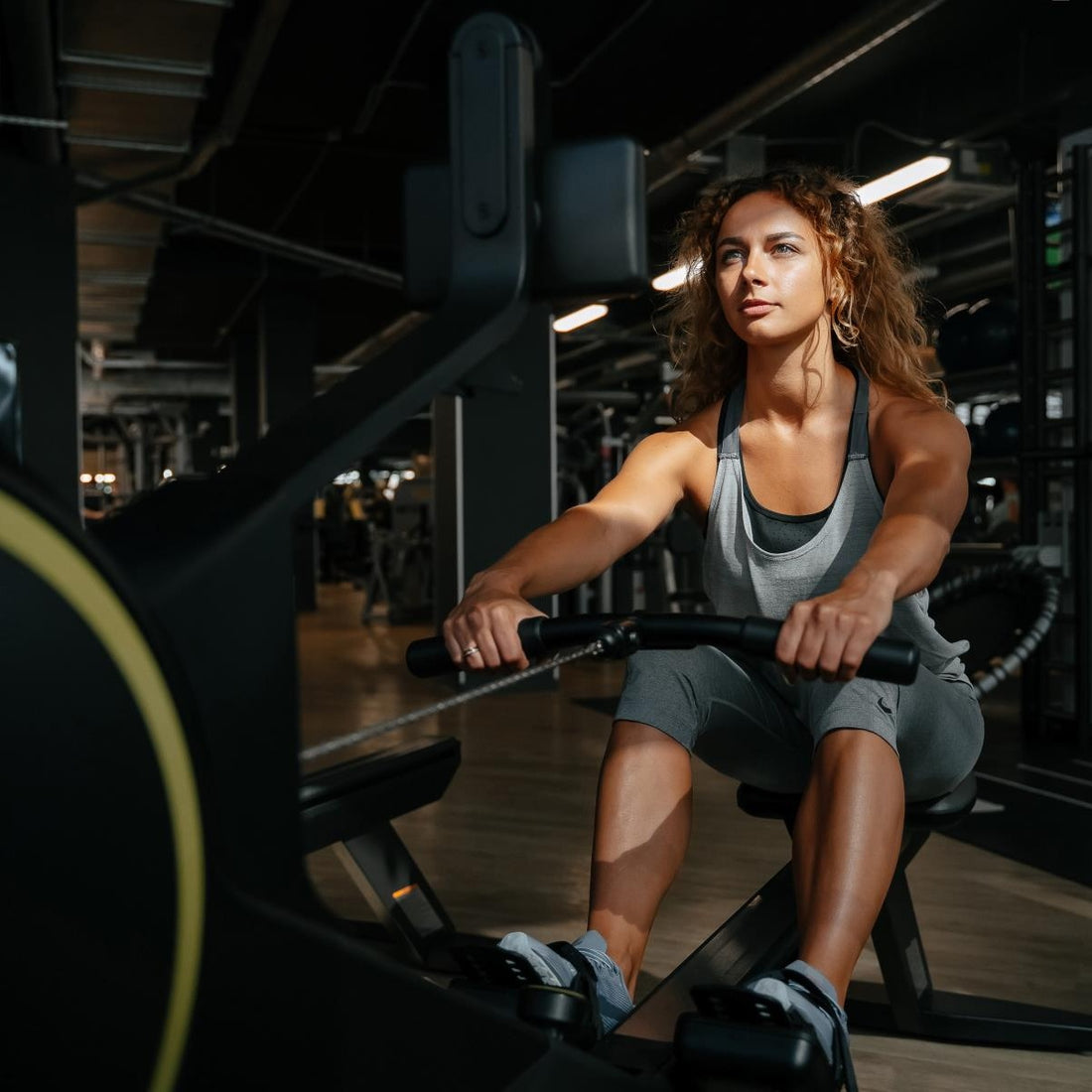Rowing is a coordinated muscular movement that involves every large muscle group in the body. The following sections illustrate the major muscles used in each movement in the rowing motion.
Catch
During the catch, your legs are compressed and your calves are vertical. Your triceps work to extend your arms and the flexors of your fingers and thumb grip the handles. Your back muscles are relaxed and your abdominal muscles bend your torso forward.
Driving force
You use the powerful muscles of your legs to initiate the drive, and all of your shoulder muscles are contracted. As you complete the drive, your biceps are engaged to pull the handle toward your abdomen, your back muscles work harder as you swing your torso, and your hip and leg muscles contract to extend your hips. When the drive is complete, the arms pull away and almost all of your upper body muscles are engaged.
Ending
At the end, the abdominals stabilize the body and the hips and quads contract. The biceps and many of the back muscles also contract to help keep the torso in the finish position and allow the upper arms to rotate internally.
Recovery
The triceps engage, pushing the arms forward and away from the body. The abdominals bend the torso forward and the legs and calves contract as you slide to the catch point.
Each phase also utilizes the muscles of the hands, neck and chest. Thus, completing a rowing movement means you have activated every major skeletal muscle in your body.
Aerobic exercise + resistance = the ultimate workout
Skeletal muscles aren't the only ones that benefit from rowing - your cardiovascular system gets a workout too! Because rowing uses your entire body. Because rowing uses your entire body, it does a great job of keeping your heart rate elevated and your lungs working hard. This type of exercise is called aerobic exercise because it enhances your body's ability to use oxygen efficiently. While many people have a strong preference for strength training or aerobic training, studies have found that neither type alone reduces risk factors for cardiovascular disease (CVD). However, when aerobic exercise is combined with resistance exercise (such as rowing), CVD risk factors can be improved in as little as 8 weeks. Rowing is also the perfect aerobic exercise for anyone with joint pain or injury. Unlike other cardio exercises that are typically based on running and jumping, rowing is zero impact and non-weight bearing. It can also be completely customized to your fitness level and the type of workout you're looking for. If you want to increase your endurance, you can lower the resistance level and row at a slower pace for a longer period of time. If you want a HIIT-style workout, increase the resistance and intensity to row for short periods of time at a high speed.
Rowing is the full-body workout you've been waiting for
Instead of asking "what muscles does rowing build", ask "what muscles does it not build". Rowing is one of the few exercises that can provide a true total body workout with an easy-to-learn machine. If you're ready to put your rowing muscles to work, be sure to check out the ROW ViGOR app. With ROW ViGOR, all you need is a rowing machine and a mobile device to take your fitness to the next level.

